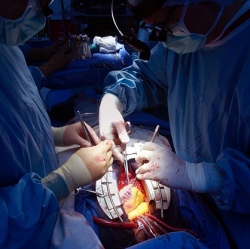
Imperial College London researchers have developed a new method for analyzing biological samples based on their chemical makeup that could transform the way medical scientists examine diseased tissue.
When tests are carried out on a patient’s tissue today, such as looking for cancer, the test has to be interpreted by a histology specialist, which can take weeks to get a full result.
Scientists have proposed using mass spectrometry imaging (MSI), which uses technologies that reveal how hundreds or thousands of chemical components are distributed in a tissue sample. But currently proposed MSI workflows are subject to several limitations, including nonoptimized raw data preprocessing, imprecise image coregistration, and limited pattern recognition capabilities.
In Proceedings of the National Academy of Sciences (open access), the Imperial College London researchers have now outlined a comprehensive new strategy for effectively processing MSI data and building a database of tissue types.
In MSI, a beam moves across the surface of a sample, producing a pixelated image. Each pixel contains data on thousands of chemicals present in that part of the sample. By analyzing many samples and comparing them to the results of traditional histological analysis, a computer can learn to identify different types of tissue.
A single test taking a few hours can provide much more detailed information than standard histological tests, for example showing not just if a tissue is cancerous, what the type and sub-type of cancer, which can be important for choosing the best treatment. The technology can also be applied in research to offer new insights into cancer biology.
According to Kirill Veselkov, M.D., corresponding author of the study from the Department of Surgery and Cancer at Imperial College London, “MSI is an extremely promising technology, but the analysis required to provide information that doctors or scientists can interpret easily is very complex.
This work overcomes some of the obstacles to translating MSI’s potential into the clinic. It’s the first step towards creating the next generation of fully automated histological analysis.”
